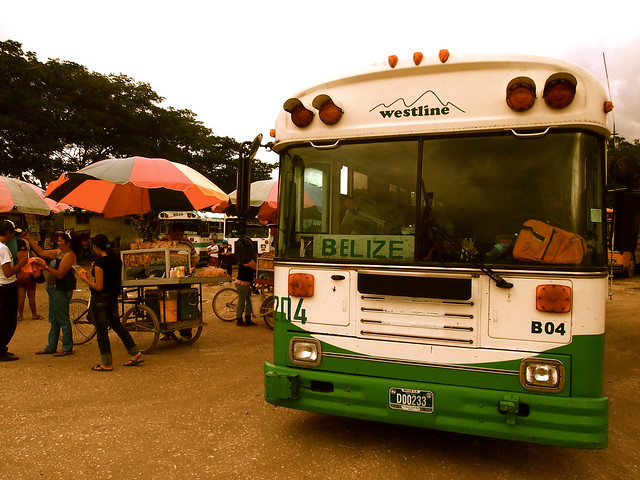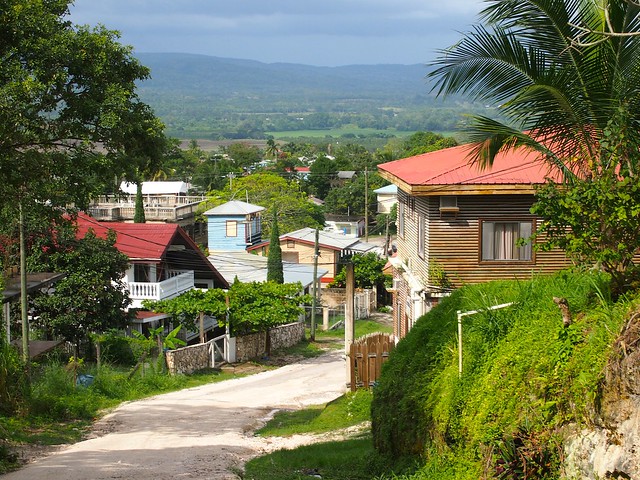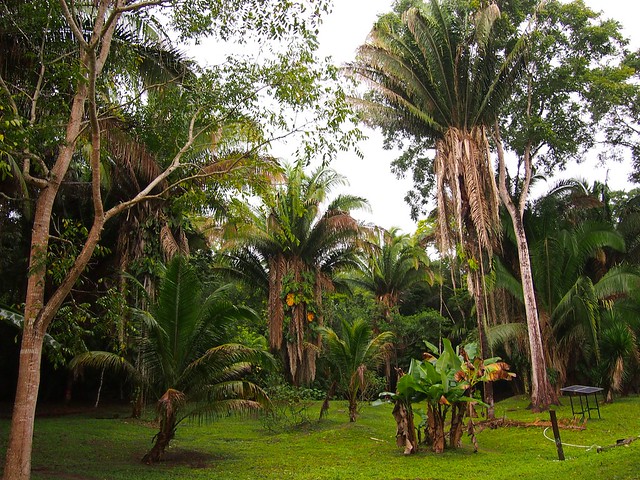8 Things I Learned About Belize
I seem to have acquired a new trend to my travels — I head to a new country that I've heard good things about and seen some pretty photos of, but don't actually know that much about. I go in without expectations, having done little to no research, and simply open myself up to whatever happens.
So far, this has actually been a surprisingly good approach to traveling. It has left me pleasantly surprised in places like Romania and Bulgaria; in Iceland and Slovenia. I've made some great memories, and learned a few things along the way.
Most recently, I approached a trip to Belize and Guatemala in this way. I had heard rave reviews of Belize, but didn't actually know much about the Central American nation at all.

As it turns out, Belize is pretty darn interesting, despite being tiny. Here are some things I learned about the country:
8 fun facts you might not know about Belize
1. Ties to Britain
Belize is the only nation in the region with a British colonial heritage. The Spanish conquistadors originally explored Belize and claimed it for Spain, but they decided not to settle it because of a lack of resources.
Eventually they handed the colony over to the British, who first appointed a superintendent over the Belize area in the 1780s and formally declared it a British colony in 1854, calling it British Honduras.
Belize was granted independence from Britain in 1964, and became “Belize” in 1973. However, according to the CIA World Factbook, border disputes between the UK and Guatemala delayed Belize's actual independence until 1981. Today, it is still a Commonwealth country.
Curiously (to me, at least), they do NOT drive on the opposite side of the road in Belize. I had expected them to, since their ties to the UK are so strong and so recent. But they don't.
2. The prevalence of English
Perhaps because of its ties to the British Empire, the official language in Belize is not Spanish, but English. Nearly everyone in the country speaks it, which is almost odd since it is completely the opposite if you cross the border into neighboring Guatemala or Mexico. However, most Belizeans speak English as a second language, with Spanish and Kriol (Belizean Creole) being more prevalent.

3. Caribbean vibe
Even though Belize is situated firmly in Central America, the country has a distinctly Caribbean vibe to it. Perhaps it's because of the English influence, or the fact that Belize is on the Caribbean Sea. Or perhaps it's neither of those reasons.
Regardless, Belize felt less to me like a Latin country, and much more like a Caribbean one (especially out on Caye Caulker, where the Rasta culture is alive and well).
4. Mayan history
Before the Brits (or any Europeans, for that matter) came in, Belize's main population was the Maya. Even though most people associate the Maya with Mexico, the civilization actually extended through Belize, Guatemala, and even Honduras at its height.
The largest Maya city in Belize was Caracol (which you can still visit today), and it's estimated that, at one point, up to 400,000 Mayas lived in the area that is now Belize.

5. Small population and size
Believe it or not, there are actually less people in Belize today than there were in the Pre-Columbian Maya days. There are only a little over 300,000 inhabitants in Belize these days, giving it one of the lowest population densities in Central America.
The country of Belize itself is small, though — it's not much larger size-wise than the U.S. state of Massachusetts.
6. Belize Barrier Reef
Off the coast of Belize lies part of the Mesoamerican Barrier Reef System, which stretches from the upper Yucatan peninsula all the way down to Honduras, making it the second-largest reef system in the world after the Great Barrier Reef in Australia.
Because of how close the reef is to the coast of Belize, it is easily the country's top tourist attraction, popular with both snorkelers and divers. (Go on a snorkeling and sailing tour with Ragamuffin Tours – they're great!)

7. Exchange rate
The exchange rate in Belize is $2 Belizean dollars to every $1 USD. It has been this way for decades, and will probably remain this way for decades more. Most places in the country will accept either Belizean or American money.
8. The dark side
I'd be remiss talking about Belize if I only focused on the good or safe facts. Like any country, Belize has its issues. Issues like poverty and bad roads and violence that cannot be glossed over. This isn't a “fun” fact, but one that I think it's worth knowing before planning a trip to Belize.
Belize currently has a heavy foreign debt burden, high unemployment, and a notable income disparity between the rich and the poor (more than 40% of Belizeans currently live in poverty). There's also growing involvement in the Mexican and South American drug trade, and gang violence in cities like Belize City.
I'm not sharing this to scare you off of visiting Belize; I'm just simply pointing it out because you DO see evidence of most of this while traveling here. You'll find many unpaved or rough roads, there are many run-down houses and huts, you are not advised to drink the water, and Belize City is certainly not a place I would ever want to go walking around in on my own.
Most tourists won't be affected by this side of Belize; in fact, many might completely miss it depending on which part of the country they visit.
And, the positive things about the country – the friendly people, the beautiful landscapes, the interesting history, the uncrowded destinations – more than make up for Belize's shortcomings.

Overall, my experience in Belize was an extremely positive one. I learned all of these things about the country, plus one more:
I also learned that Belize is definitely a place I want to go back to.
Tips for planning your trip to Belize
I went to Belize on a tour with Intrepid Travel, but it's absolutely a Central American destination you can visit on your own.
How to get to Belize
Belize is a fairly short flight from most US destinations; all the major airlines fly to Belize City.
Where to stay in Belize
I would recommend spending some time on the mainland in San Ignacio (near Mayan ruins and some cool adventure activities), and then heading out to the Cayes – Caye Caulker and Ambergris Caye are the two most popular.
Hotels to check out include:
- Ka'ana Resort in San Ignacio – One of the best hotels in the city (and maybe in all of Belize), this eco resort can help you book all sorts of adventurous activities.
- Island Magic Beach Resort on Caye Caulker – This property is “beachfront” (really, waterfront as Caye Caulker doesn't have many actual beaches), and has a 4.5 rating on TripAdvisor.
- The Phoenix Resort in San Pedro (Ambergris Caye) – This is the #1 hotel in San Pedro. It's located in town, but gives you the feel of staying at a secluded beachfront resort.

Cool tours to take in Belize
Here are some fun day tours to check out:
- Actun Tunichil Muknal (ATM) Cave from San Ignacio
- Xunantunich and Cave Tubing Combo Tour
- Hol Chan Marine Reserve and Shark Ray Alley Sailing and Snorkeling Tour
- Ambergris Caye Sunset Sailing Tour
More essential info
- Looking for packing suggestions for Belize? Head over to my Amazon shop to see all my favorite travel gear!
- Pick up a Belize travel guide before you go.
- Don't leave home without a good travel insurance plan – because you never know what might happen! I recommend World Nomads for affordable basic travel insurance.
Have you been to or would you like to go to Belize?
*Note: I explored Belize as part of a complimentary “Land of Belize” trip with Intrepid Travel. As always, though, all opinions are my own.
Comments
Post a Comment